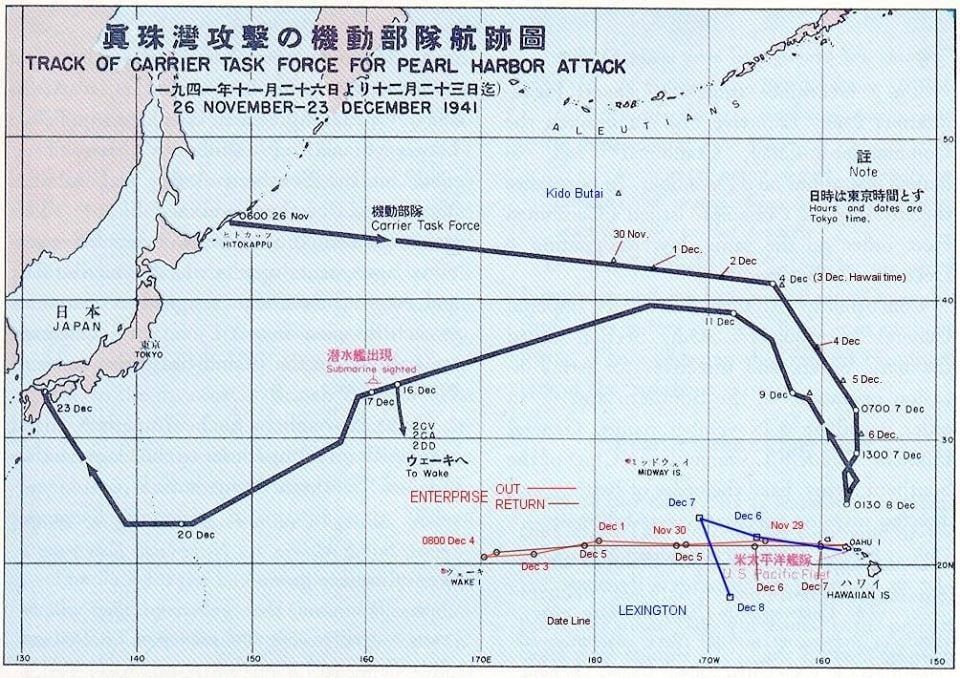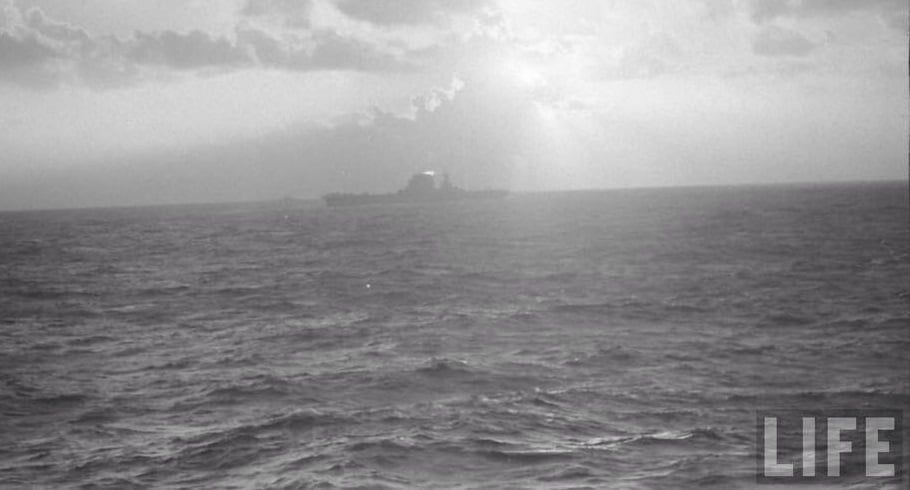yea is real surprising King didn’t convoy from the get go. USA did the same thing in WWI, not learning from their allies. A bunch of guys got slaughtered because of it.
On this day during W.W. 2
-
Jap AC had the Red Circle on them to
-
@gen-manstein yea worked good at Midway
-
@gen-manstein @barnee
I was just arguing this same thing about rondels and the meatball the other day–watching gun-camera footage of P51s attacking planes in mainland japan in 1944-45. The red on white is extremely high visibility, especially near the ground. Other top paint schemes esp by UK are much more subdued early in the war, but painting an aircraft in contrast to the ground or sea in order to identify it as friendly seems a giant backfire when it becomes a target for the enemy.
-
On this day in history …
Brigadier General James “Jumpin’ Jim” Gavin, CO 82nd Airborne Division, checks his equipment before boarding a C-47 Skytrain plane for the airborne invasion of the Netherlands. (Operation Market Garden) from Cottesmore airfield, Rutland, England. 17 September 1944.
James Maurice Gavin (March 22, 1907 – February 23, 1990)
(Photo and Caption: National Archives and Records Administration Still Pictures Unit SC 232810)
(Colorized by Craig Kelsay from the USA)

-
@captainwalker said in On this day during W.W. 2:
(…) the airborne invasion of Holland (Operation Market Garden) (…)
Thanks for sharing this. However, Operation Market Garden didn’t happen in Holland, but in the eastern part of the Netherlands. Holland is in the west.
It’s a pet peeve of mine: ‘Holland’ is frequently, but inaccurately, used as a synonym for ‘the Netherlands’. Unfortunately, this happens so often that many people have come to believe that the two are actually the same. Even the Dutch government only recently stepped away from this habit.
-
@kaleu say it enough times and it becomes true lol
-
@captainwalker Awesome photo ! Looks like a kid !
Just looked him up and he was 37. I’m gonna learn more about him
-
@kaleu fixed it…thanks for enlightening me.
-
@barnee I read another article about him yesterday (can’t find it now) and it wasn’t very favorable towards him. Apparently some of his decisions in the operation caused more delays for XXX Corps…
-
Next you will have us referring to the warmongering nation to your west, Wallonia.
-
#OnThisDay in 1942, the B-17 “Aztec’s Curse” flew a mission over the Solomon Islands. Note the smoke rising in the background from the bombing run. This photo was widely reproduced in the American press at the time. (National Archives)

-
USS Augusta, USS Midway, USS Enterprise, USS Missouri, USS New York, USS Helena, and USS Macon in the Hudson River in New York, New York, United States for Navy Day celebrations, 27 October 1945.

-
@captainwalker that must have been a hell of a treat for the spectators.
-
It was 80 years ago today, that a Japanese carrier strike force, the “Kido Butai,” consisting of six aircraft carriers (Akagi, Kaga, Sōryū, Hiryū, Shōkaku, and Zuikaku), assorted escorts, and five submarines with Type A midget submarines embarked, departed Hittokapu Bay on Kasatka (now Iterup) Island in the Kuril Islands. They were headed to a position northwest of Hawaii, intending to launch an attack on Pearl Harbor.

-
28 November 1941: the BIG E leaves Pearl Harbor
Today, 80 years ago…USS Enterprise (CV 6) sails from Pearl Harbor for Wake Island to ferry Marine aircraft to the island. A delay due to weather on her return trip, the “BIG E” would not be at Pearl Harbor as scheduled on 6 December leaving no carriers left during the Japanese attack on 7 December.
This luck would hinder the Japanese for the rest of the war as USS Enterprise would become the most decorated WW2 ship in United States Naval History and fight the Japanese in just about every major engagement in the Pacific.
On three occasions during the war, the Japanese announced that she had been sunk in battle, inspiring her nickname “The Grey Ghost”. By the end of the war, her planes and guns had downed 911 enemy planes, sunk 71 ships, and damaged or destroyed 192 more. She is the one and only BIG E.

-
@captainwalker excellent post; thanks.
-
@captainwalker Great information and great post! Makes my heart go all a flutter!
-
Pearl Harbor plus 80 countdown:
2 December 1941
Admiral Isoroku Yamamoto, aboard Japanese battleship Nagato in Tokyo Bay (photo), signals Admiral Nagumo in command of Japan’s main carrier battle group, the Kido Butai, to proceed with the attack on Pearl Harbor for 7 December. The official command has now been set.
The Japanese carrier strike force is proceeding east toward the United States on a course that is well to the north of established trade routes. This force is a third of the way toward Hawaii and operating in complete secrecy.

-
4 December 1941
With the USS Enterprise CV-6 (The Big E) on the way to Wake Island, it leaves only USS Lexington CV-2 (Lady Lex) at Pearl Harbor with the Japanese closing in for the attack.
Back on the West Coast, USS Saratoga CV-3 (photo) has completed her overhaul at the Bremerton Navy Yard, WA and is underway to San Diego, CA to pick up her air wing and ready for return to service. Thankfully, she would not be at Pearl Harbor on 7 December but would arrive there on 15 December to begin combat operations against the Japanese.

-
5 December 1941
USS Lexington CV-2 (Lady Lex) sails with Task Force 12 at 0810 to ferry Marine aircraft to Midway, leaving no carriers at Pearl Harbor much to the dismay of the Japanese. A spy reports this information and it reached the Japanese Task Force but they decide it is too late to stop now. The battleships will have to do.
At 1130, the Japanese oilers refuel the carrier group and stand by letting the attacking group go on without them. Some 27 Japanese submarines are in the Hawaii area already.
At 1500, destroyer USS Ralph Talbot DD-390 picks up a sonar contact five miles off Pearl Harbor. Knowing US submarines are not in the area, her Captain asks for permission to fire depth charges. the squadron commander refuses stating it must be a fish…
Images: Rare photo of USS Lexington (CV-2), flagship of Task Force 12, underway in December 1941. LIFE magazine, Bob Landry photographer, shared by Peter DeForest.








